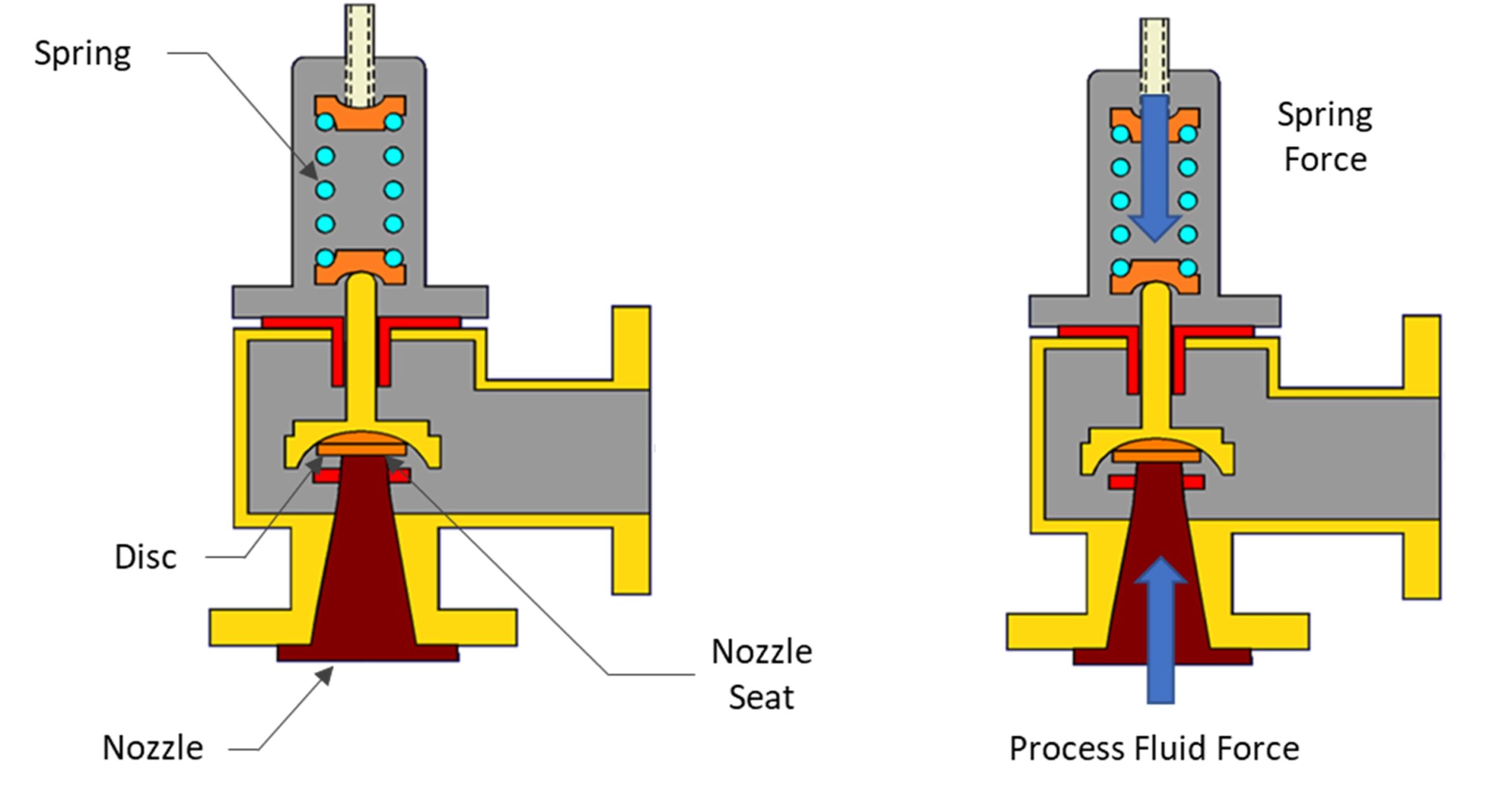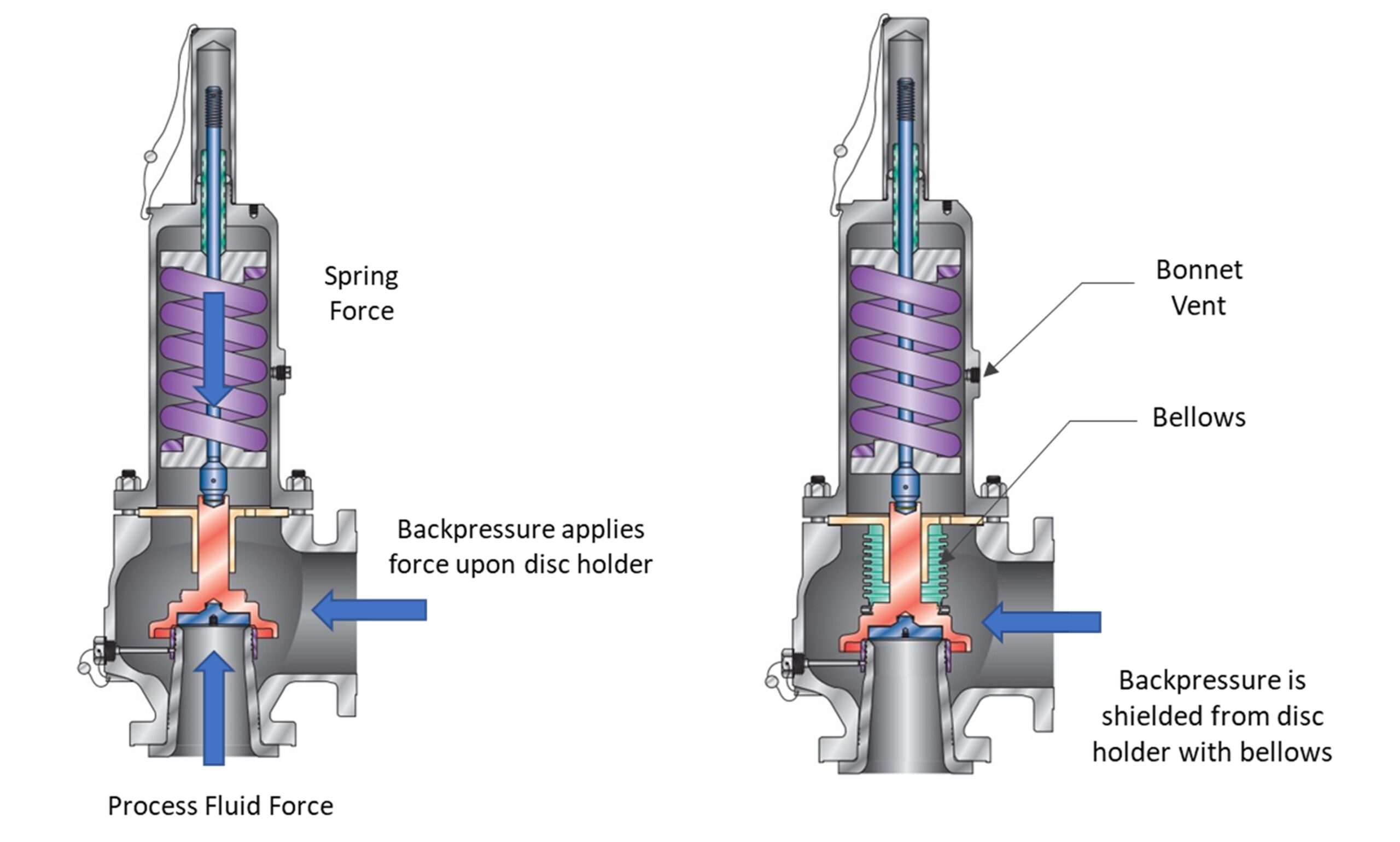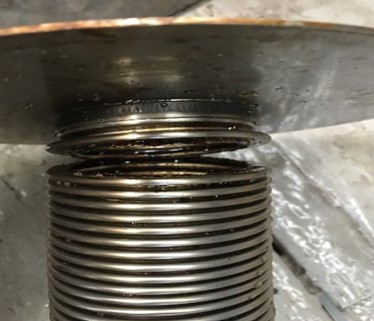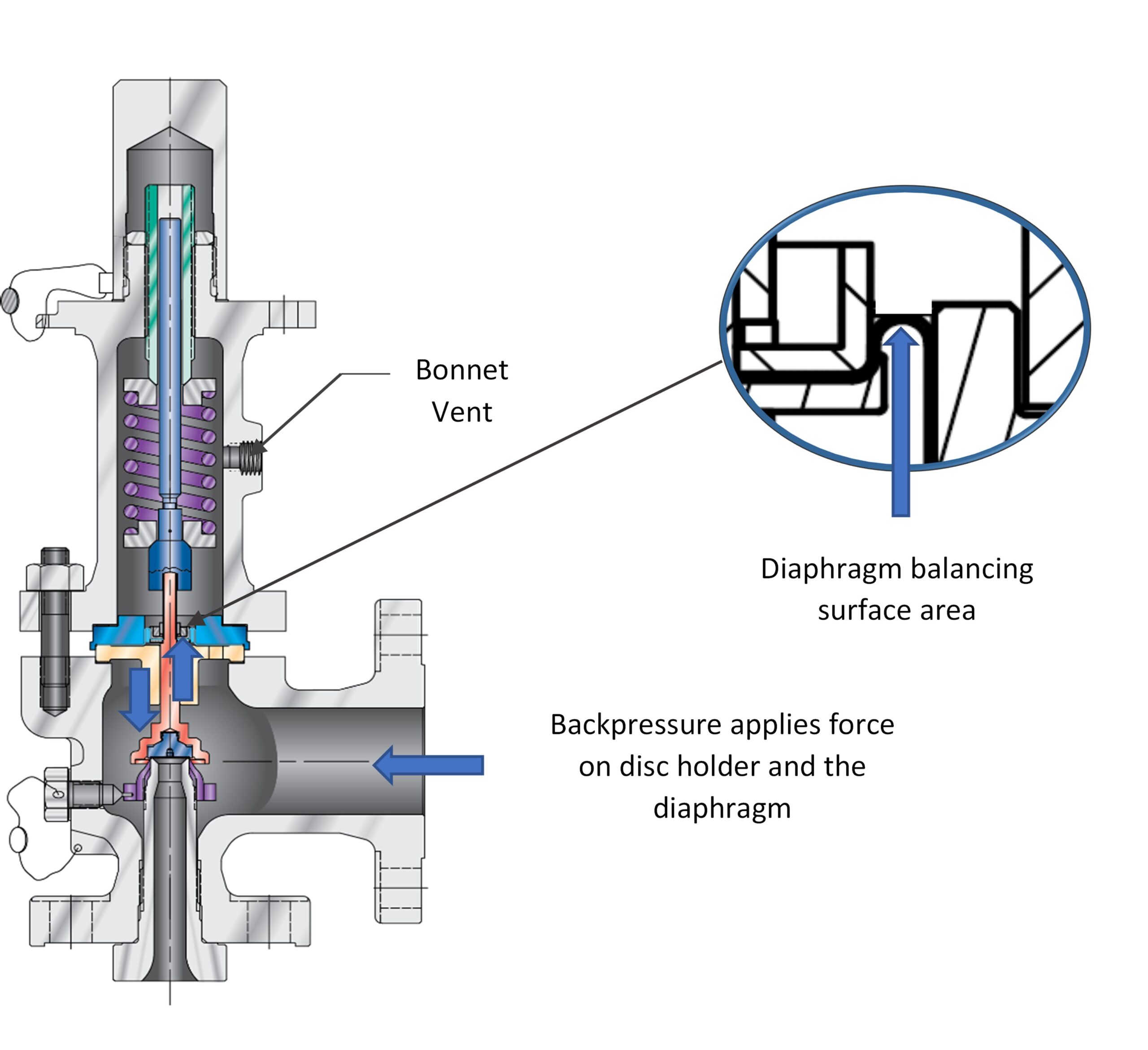Pressure relief valves (PRVs) protect pipes, manifolds, and vessels by relieving overpressure conditions. For applications that do not vent directly to atmosphere, PRV designs with metal bellows can eliminate the effects of backpressure, but these devices are prone to failures.
Below is a summary of my article in the July 2023 issue of Processing, titled “Addressing bellows failures in relief valve applications,” which discusses a new design that extends backpressure limits, while providing greater flow capacity.
Understanding PRVs
In a PRV, a calibrated spring presses a disc against the inlet nozzle seat to contain the process fluid. When the inlet pressure reaches the PRV setpoint, it forces the disc to lift, relieving excess pressure until the spring can close the valve again.

Figure 1: A conventional direct spring pressure relief valve protects equipment by automatically venting the process media when pressure in the inlet nozzle overcomes the downward force of the spring.
PRVs that vent into closed environments may experience backpressure. Backpressure pushes against the back of the disc holder in conjunction with the spring, increasing the pressure needed to open the valve. This can be mitigated by shielding the disc holder with a metal bellows that vents to atmosphere.

Figure 2: The setpoint of a conventional direct spring PRV (left) will vary with backpressure. A bellows style PRV (right) uses a metal bellows to shield the disc from the discharge backpressure, allowing the valve to relieve at setpoint despite constant or variable backpressure.
Limitations of bellows
Unfortunately, metal bellows are prone to corrosion and fatigue.
Data analysis of 30,000 PRV maintenance records across a broad range of industries and PRV brands suggests a bellows failure rate of two to six percent per year, depending on application and industry.

Figure 3: Mechanical bellows are comparatively fragile and sensitive to metal fatigue and/or corrosive attack. A failed bellows leaks the process media to the environment and causes the PRV setpoint to vary with backpressure changes.
Since a bellows vents to atmosphere, any rupture allows process media to escape, posing a safety or environmental risk. It also exposes the PRV disc holder to backpressure, changing the amount of pressure required to open the valve.
Balanced diaphragms provide an alternative
A new PRV design uses an elastomer diaphragm to provide balancing in backpressure applications.
Any backpressure from the header system applies forces upward on the underside of the diaphragm equal and opposite to the forces also applied to the disc holder, and this balance of forces provides a balanced operation.

Figure 4: The reinforced elastomer diaphragm is much more flexible and far less likely to fail due to mechanical movement or corrosive attack.
This design functions effectively with backpressure up to 80 percent of setpoint, compared to 50 percent for a typical bellows valve, and it has higher venting capacity due to a less restrictive flow path. Balanced diaphragms can replace bellows in some existing PRVs, significantly reducing maintenance costs, while improving reliability and performance.
Use cases
Balanced diaphragms are well-suited for cyclic conditions caused by process instabilities, as seen in a refinery process with several PRVs connected to a common header. In a chemical plant looking to increase capacity, using balanced diaphragms to upgrade existing PRVs allows for effective operation under increased flow and backpressure conditions.
In these and other applications, upgrading existing valves with balanced diaphragms provides a superior solution, without requiring extended downtime and high costs for valve replacement.
Visit the Crosby™ J-Series Direct Spring Pressure Relief Valves to know more.